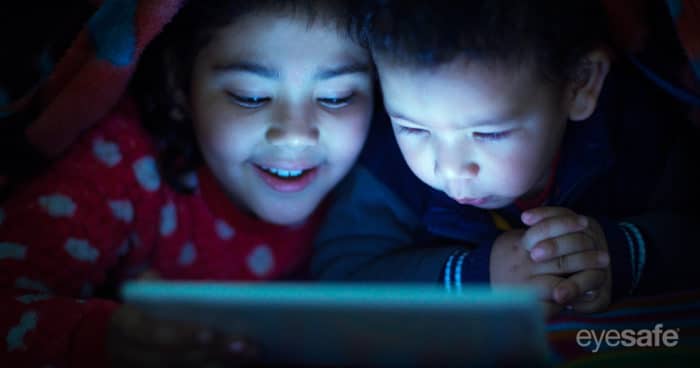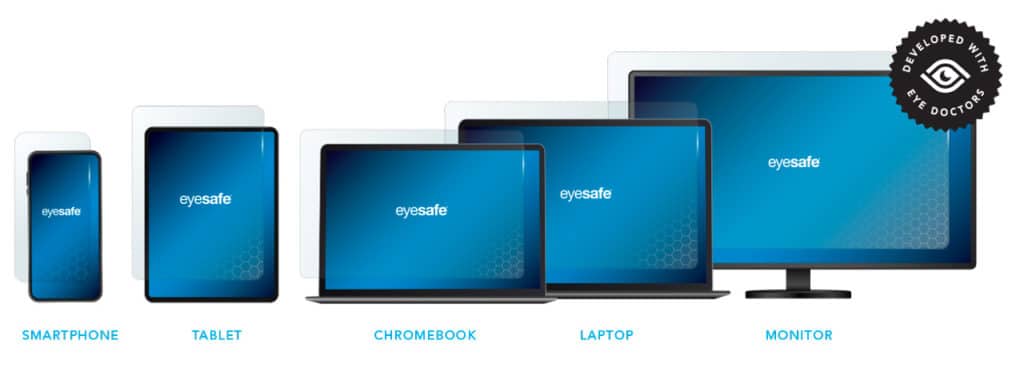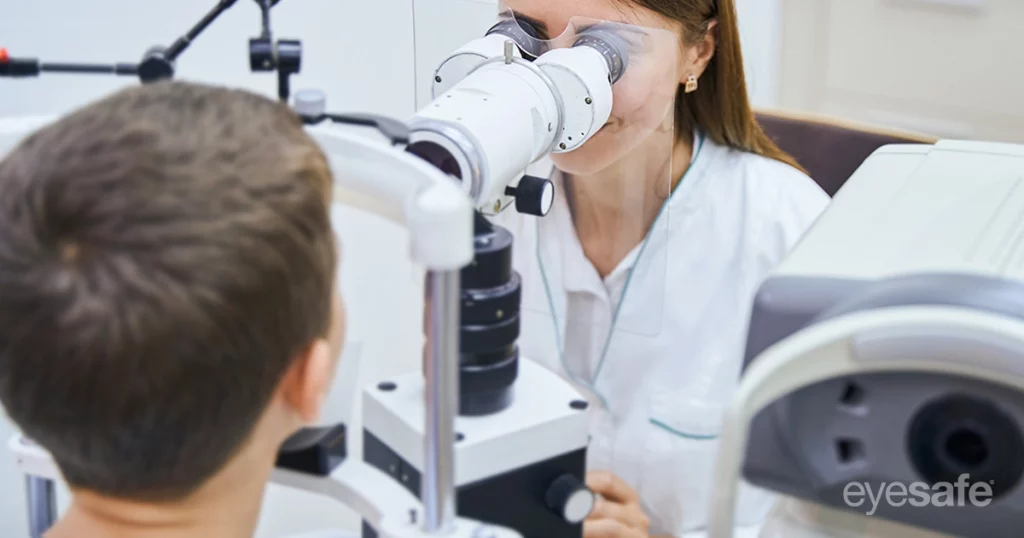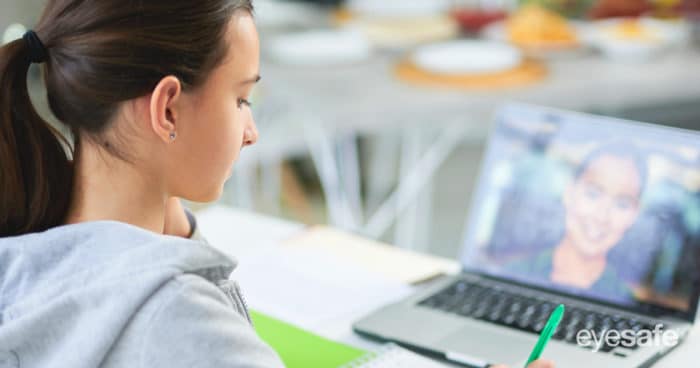The pandemic forever changed how we work, learn, and connect. The shift was particularly dramatic for children, as millions moved to distance and hybrid learning due to the shuttering of schools across the country. We’ve seen their screen time rise to an average of 6 hours per day, nearly double the amount in 2019.1

Children may be more vulnerable to the effects of blue light because their eyes don’t have the same blue light-filtering ability that adult eyes have.2 In this post, we ask a doctor to explain why children’s eyes are at risk and provide tips to help promote better screen time habits.
What is Blue Light and Why Does it Matter?
All digital devices emit high-energy blue light, or simply “blue light.” Blue light is a visible light that occurs in both our natural environment (from the sun) and from artificial sources (digital devices such as smartphones, laptops, tablets, and television). Our level of blue light exposure correlates with the amount of time spent on screens. This is important for children because they are using devices much more now than ever before.

There have been numerous studies on the potential risks of excessive blue light exposure. From sleep disruption to eye health, there is increasing concern that blue light may have both short-term and long-term impacts to our health. While more research is necessary to conclusively say that blue light has negative health consequences, studies have raised concern within the medical and scientific communities. We spoke with Dr. Molly McDonald, Director of The Vision Performance Center at McDonald Eye Care and a member of the Eyesafe® Vision Health Advisory Board, to get her perspective on the unique risks for children.
What makes children more vulnerable to blue light from digital devices?
The primary reason kids are more vulnerable to blue light is the young eye has minimal defense against blue light. The natural lens of a child’s eye is very clear, especially until the age of 12. Over time, as the lens matures, it builds up a natural yellowing, providing some protection from blue light entering the eye. Because a child’s lenses are so clear when they are young, they are more vulnerable to blue light emissions and associated risks.
What are the potential risks from blue light exposure?
With increased time on screens, kids are bombarded with the digital blue light. Blue light can disrupt the production of melatonin, which governs our natural sleep cycle. Blue light decreases our melatonin release, which decreases deep sleep. We all know adequate sleep is needed for our immune systems to fight off disease, and to repair and build cells so, there are other factors here to consider, especially with children.
How can parents help protect their children from blue light?
I get this question all the time in my practice. There are a range of options to consider.
First, you need to adjust the screen distance between the device and your children’s eyes. I recommend patients hold their device as far from their face as possible. Obviously, this can be challenging with children’s shorter arms, but consider trying to have them set it up on a counter in front of them.
Additionally, I recommend parents reduce the blue light from their device, whether by adjusting the light outputs in the settings or by adding a blue light screen filter. Night shift or dark mode can further decrease the blue light exposure on your device, but the color quality is not the same. There are also new options in eyewear and even contact lenses that now filter blue light, like those provided by Transitions or protection built into the lenses like EyeZen technology. Ultimately, we need to have blue light filtering in place to not only help protect our eyes, but also ensure our health is not adversely affected, like disruption to our sleep cycles.

What tips do you have to build healthy screen time habits?
In addition to decreasing blue light emissions, we can all benefit through healthy screen time habits. Ensuring your displays are properly placed from your eyes and having blue light screen filters on your devices is important. Adjusting your display as far as possible and about 30 degrees below eye level is often most comfortable.
Other things to consider is to increase the fonts on your screen so your eyes are not squinting to see things. There’s also a simple practice of the 20-20-20 rule. Look at something 20 feet away for 20 seconds every 20 minutes, take big blinks during the break. Finally, stay hydrated, get up out of your chair, get outside and give your eyes a rest! Take a walk and give your eyes and your body the movement it needs.
Solutions Designed for Students
To help protect children from blue light, Eyesafe, a leader in blue light technology, works with school districts and schools to apply blue light screen filters to student devices. These filters reduce intense blue light to help compensate for the natural filtration otherwise not present in children’s eyes. For more information on purchasing blue light filters for your school or district, please contact Paul Wright, SVP of Sales and Business Development at [email protected].

1. From a survey of more than 3,000 ParentTogether members via Facebook Messenger from April 16-20, 2020.
2. Behar-Cohen F, et al. Light-emitting diodes (LED) for domestic lighting: any risks for the eye? Progress in Retinal and Eye Research. 2011 Jul;30(4):239-57.
About Eyesafe
Eyesafe Inc. is the worldwide supplier of advanced blue light mitigating technology, solutions, and standards. With pioneering products and services, in collaboration with leaders in healthcare, Eyesafe is shaping the future of low blue light consumer electronics. Eyesafe® Standards, Eyesafe® Technology, and the associated intellectual property portfolio is developed by a world-class team of eye doctors, engineers, and scientists with decades of experience in electronics, display materials, light management, optometry, and ophthalmology. The Eyesafe brand is trusted by consumers and integrated in millions of digital devices from Dell, HP, Lenovo, ZAGG and others. Eyesafe was recently ranked #5 in the computer hardware category in the Inc. 5000 Fastest-Growing Private Companies in America. Learn more at eyesafe.com

